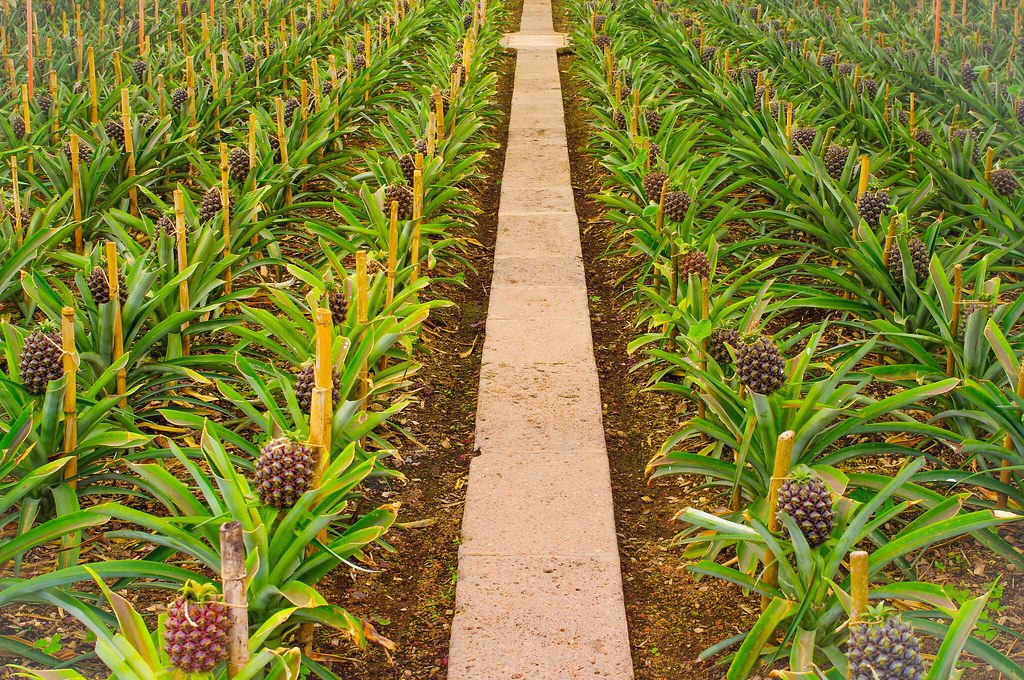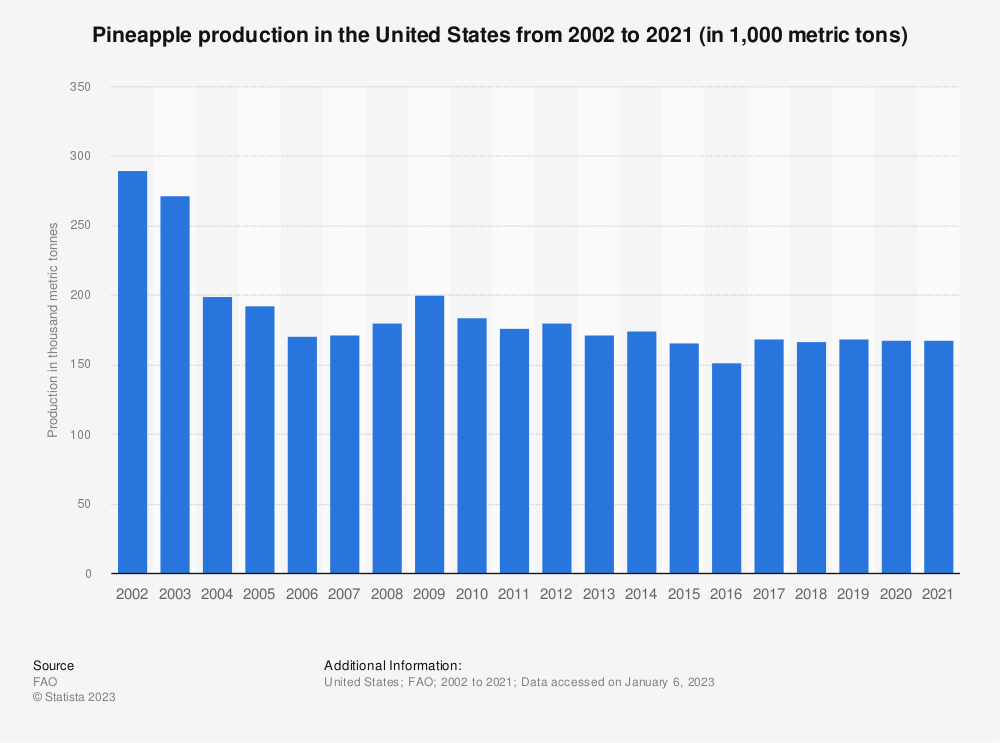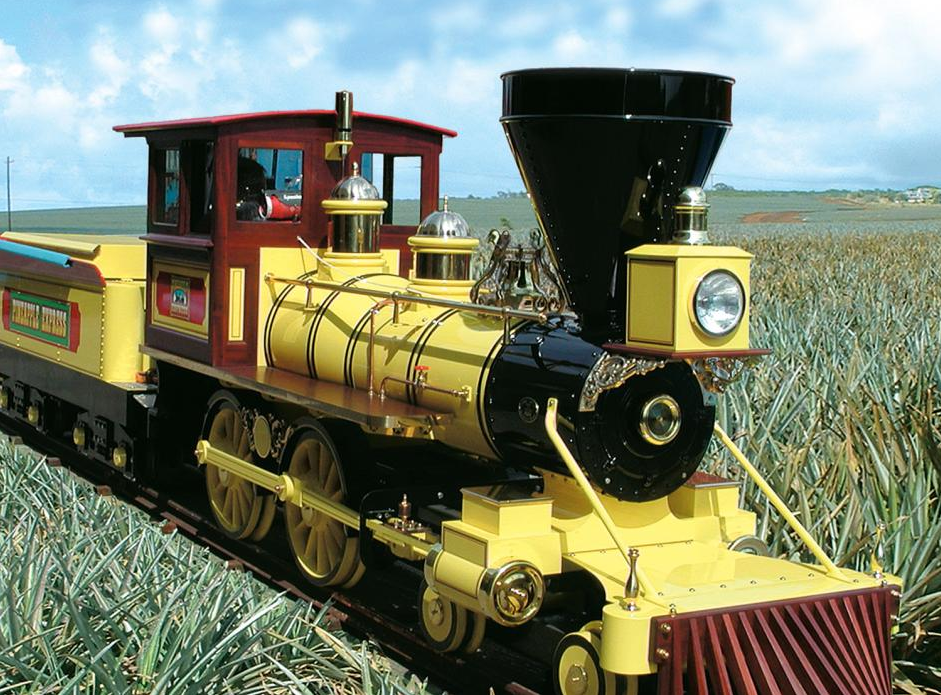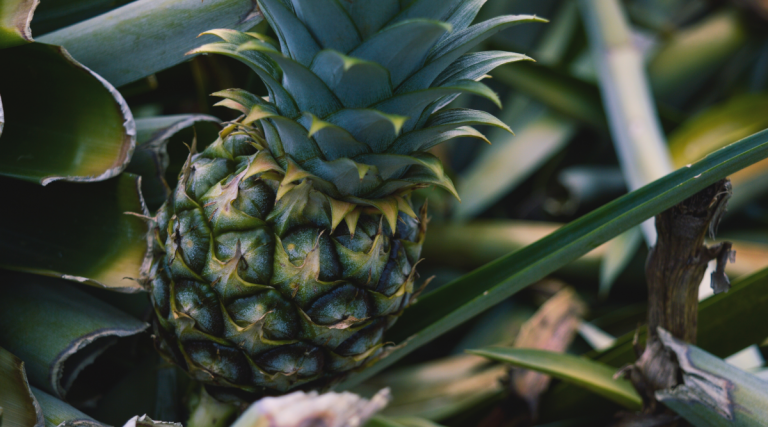Pineapple growing in the US, with their tropical sweetness and unique spiky exterior, has grown across many states in the past few decades. While Hawaii is often associated with pineapple production, there’s more to the story. In this article, we’ll delve into the intriguing world of pineapple cultivation in the United States, answering key questions and uncovering lesser-known facts.
Which State Grows the Most Pineapples?
For decades, Hawaii was the pineapple capital of the United States. The islands’ volcanic soil, coupled with a warm tropical climate, created the perfect conditions for pineapple cultivation. Hawaii’s Dole Plantation, in particular, was an emblematic figure in the pineapple industry.
However, in recent years, other states have entered the pineapple game, diversifying the landscape.

Why Did Hawaii Stop Growing Pineapples?
The decline of pineapple production in Hawaii is a story of economic shifts and changing global markets. As labor costs rose in Hawaii, it became more cost-effective for companies to move their operations elsewhere, particularly to countries with lower labor costs. This led to the closure of many pineapple farms in Hawaii.
Furthermore, urbanization and a shift towards more lucrative crops also played a role in the decline of pineapple farming in the state.
Where are Pineapples Grown in the US Besides Hawaii?
While Hawaii was the pioneer in pineapple cultivation, other states have stepped up to fill the void left by its decline. States like Florida, California, and Puerto Rico have embraced pineapple farming, taking advantage of their own unique climates and soil conditions.
These regions now contribute significantly to the overall pineapple production in the United States. In 2021, there were about 5,931 (estimated) hectares available for pineapple production across the US, slightly down from the previous year.

Pineapple Production in California
While California is renowned for its diverse agricultural output, pineapples may not be the first fruit that comes to mind. However, a lesser-known fact is that some regions of California have successfully ventured into pineapple cultivation. Coastal areas, particularly in Southern California, benefit from a Mediterranean climate that mimics the tropical conditions favored by pineapples.
Forward-thinking farmers have employed innovative techniques to create microclimates that support pineapple growth. This includes the use of protective structures and specialized irrigation methods. While California’s pineapple production is not on the same scale as Hawaii’s historic operations, it showcases the state’s adaptability and the willingness of its agricultural community to explore new frontiers.
Pineapple Production in Puerto Rico
Puerto Rico, an unincorporated territory of the United States, boasts a thriving pineapple industry that adds a tropical touch to the island’s rich agricultural landscape. The fertile soil and warm, humid climate create an ideal environment for pineapple cultivation. The island’s agricultural heritage, combined with modern techniques, has led to the establishment of numerous pineapple farms.
While the scale of production may not rival that of major pineapple-producing countries, Puerto Rico’s contribution to the industry is significant. According to the United States Department of Agriculture (USDA), in 2019, the value of pineapple production in Puerto Rico was approximately $12.5 million USD.
The locally grown pineapples, renowned for their exquisite flavor and quality, find their way into markets not only within the territory but also on the mainland United States. This underscores the island’s role in diversifying the sources of this beloved tropical fruit.
Pineapple Production in Florida
Florida, known for its citrus groves and diverse agricultural output, also plays a role in the American pineapple industry. While not as prominent as some other states, certain regions in Florida have successfully cultivated pineapples. The state’s subtropical climate, especially in the southernmost regions, provides a favorable environment for pineapple growth.
Florida’s pineapple farms make a notable contribution to the local economy. The revenue generated from pineapple production supports agricultural communities and adds another layer of diversity to Florida’s agricultural portfolio. Additionally, the presence of pineapple farms showcases the state’s adaptability and the determination of its agricultural community to explore new avenues in crop cultivation.
Where Does Dole Grow Their Pineapples?
Dole, one of the world’s largest producers of fruits and vegetables, has an extensive network of pineapple farms around the globe. While they originated in Hawaii, Dole’s pineapple farms now span across various countries, including the Philippines, Thailand, and Costa Rica. These locations allow Dole to provide a consistent supply of high-quality pineapples year-round.

Final thoughts on Pineapple growing in the US
In the tapestry of American agriculture, pineapples have found new homes beyond the shores of Hawaii. While the Aloha State remains a significant player in pineapple production, other states have risen to the occasion, ensuring a continued supply of this delectable fruit.
Dole, with its extensive global operations, plays a pivotal role in this story. As the pineapple industry continues to evolve, it’s clear that the love for this sweet and tangy fruit is far from fading.


0 Comments